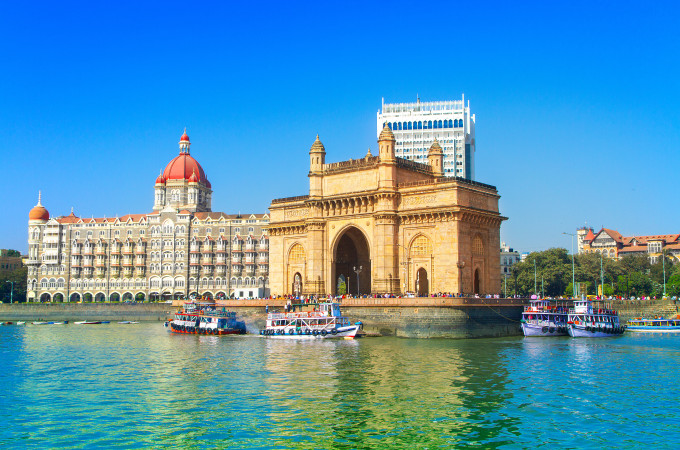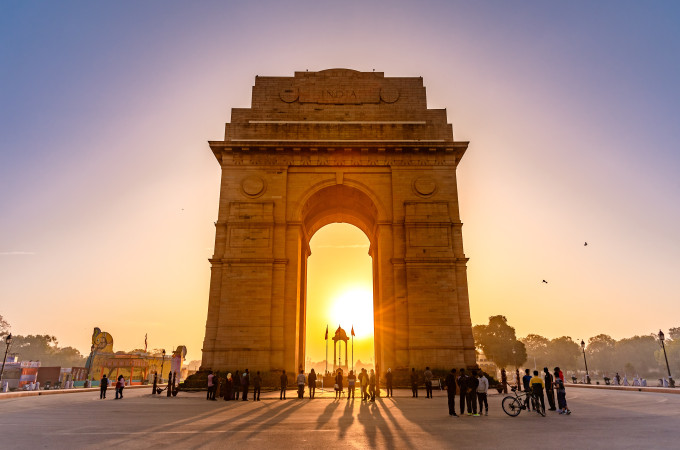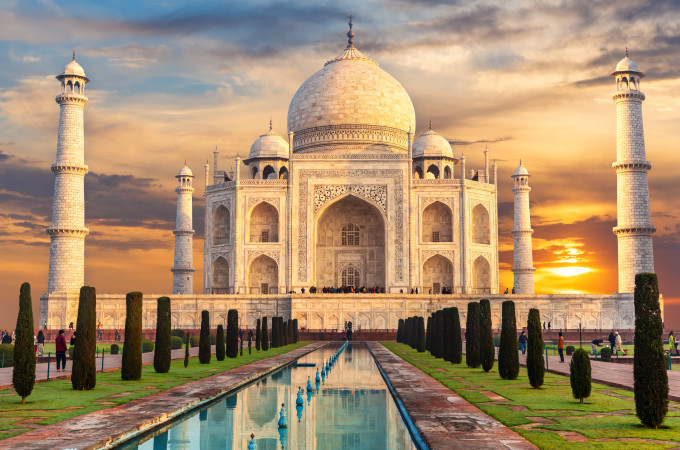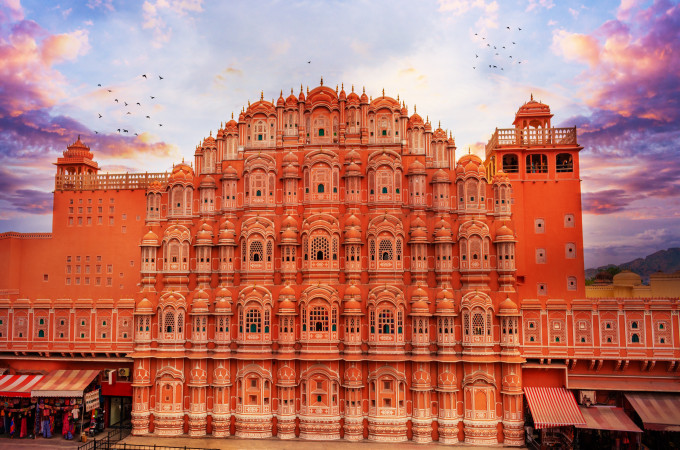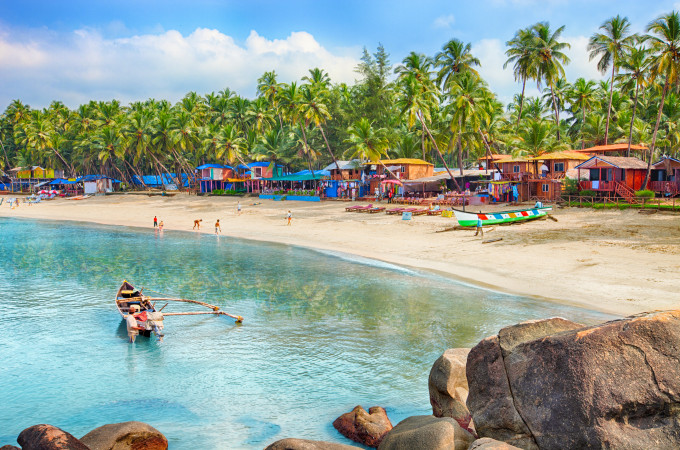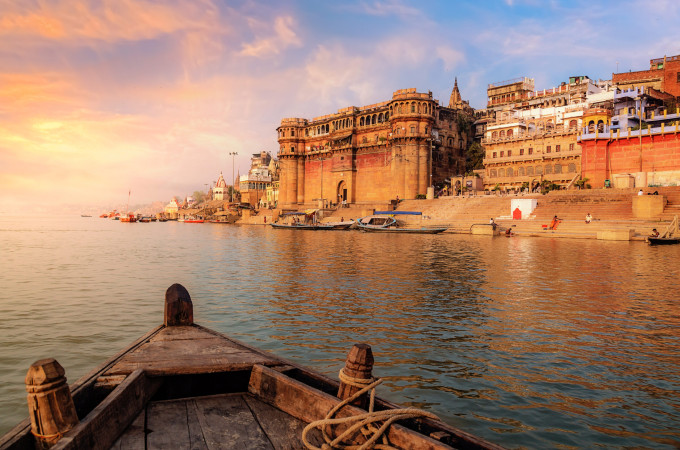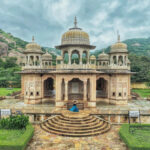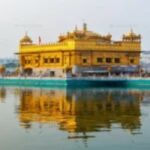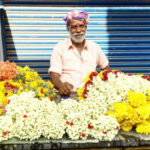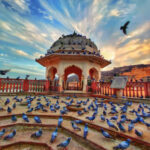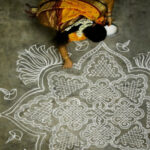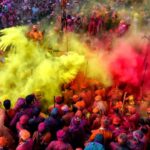With a documented history that dates back 5,000 years, India is a rich melting pot of customs, traditions, histories and culinary influences.
The ancient Silk Road caravans and the maritime spice and tea trade on the Indian shores ensured that India became a crossroad for not just commerce and trade, but also ideas, cultures and fusions of regional cuisine.
The Indian culinary scene is varied, diverse, and exciting. While some culinary themes like the flavorful use of spices, plants and herbs run through all of India, you will still find tremendous diversity in the cuisines of different parts of India.
THE NORTH INDIAN CUISINE is a veritable fusion of influences from parts of the Eurasian continent like Persia and Central Asia with the local Indian tradition of cooking.
Whereas, SOUTH INDIAN CUISINE is heavily influenced by the historical maritime spice and tea trade ties of the region with South East Asia and the Arabian Gulf region.
It wouldn’t be hyperbole to claim that India is one of the world’s greatest “foodie destinations.”
In this article, we will give you a complete run-down of the Indian culinary landscape with tips on how to go about unlocking the secrets of the gastronomical wonders of India.
We will cover not just India’s greatest and most beloved dishes, but also a broad range of street foods, snacks and desserts that leave your taste buds in a state of pure ecstasy.
We will also tell you where to sample India’s greatest dishes and the regions each dish is famous for.
Top Tips For Eating In India And Avoid Getting Sick
Before we get into the dishes, let us look at some useful tips that will help you navigate your way through the Indian gastronomical landscape and avoid the dreaded “Delhi Belly” (diarrhea).
Consult Your Doctor Before Your Trip to India
If you are travelling to India for the first time, consult your doctor if you have a history of any allergies or recurring illnesses.
They might recommend certain probiotic pills before departure to prevent any stomach bugs. Pick up some diarrhea medicines, pain relief and anti-nausea pills.
Avoid Tap Water. Stay on Bottled Water. Keep Yourself Hydrated, and Carry a Reusable Water Bottle
Avoid tap water to stay safe from waterborne illness. That is one of the most important “Donts” of travelling in India.
DO NOT DRINK WATER DIRECTLY FROM THE TAP. Prefer bottled water. Most good hotels also have RO Purifiers that provide filtered water, which is also safe for drinking.
You will find locals using tap water but they are used to it. You are not. Using tap water in India might result in diarrhea or typhoid as your stomach is not accustomed to the water.
Also, avoid raw salads or fruits that might have been washed with tap or unclean water.
India can often be hot and humid in the summer months.
It is therefore very important to keep yourself hydrated and carry a bottle of water around. You will need to keep replenishing yourself with more water to cover the loss of fluids due to heat and humidity. It is also a good idea to carry electrolyte sachets or tablets should you get dehydrated.
Eat Like a Local. Embrace the Local Cuisine
In India, it is common to eat with your hands. You should try it as well. In a counterintuitive manner, eating with your hands—washed well before you eat—is actually more hygienic and safer than using utensils or cutlery that might look clean but probably isn’t.
Many of the best Indian dishes like Biryani, curries and Pulao are best eaten with your hands. In India, you are expected to eat with your right hand only. Eating with the left hand is considered taboo and frowned upon. Respect the local eating etiquette.
EMBRACE THE LOCAL CUISINE AND TRY THE LOCAL DISHES. Make sure you eat at reputable restaurants that are well-reviewed at independent forums online.
You will find reliable honest reviews of the most notable restaurants on Tripadvisor, Google YouTube, Instagram, Facebook and the blogosphere as well. Do check them out before deciding where to eat or just a local for recommendations.
Start Slow with Spices. Avoid Eating Too Much Spicy Food at the Start
India is a never-ending flavorful medley of spices, aromas and tastes. But they need time to grow on you if you are unaccustomed to them.
Restaurant staff understands this. Tell them to use mild spices. It is wiser to start slow with spices and then gradually “spice it up” as you go.
Try the Indian Street Food But Do Your Diligence
India has one of the best street food cultures in the world. Do not be shy of trying street food but pay attention to the hygiene of the food stalls.
Prefer stalls that have good crowds gathered around them. They are usually the ones with best and freshest ingredients. Wash your hands before and after eating.
You can also ask a local to know where the best street food stalls are or do your research online.
Try the Vegetarian Food
While you can find great non-vegetarian options in all of India, Vegetarian food is India’s best-kept secret. You should give it a try, even if you are an incorrigible carnivore.
Respect Local Food Etiquette
If you are invited by a local to dine, always eat with your right hand. Eating with your left hand is considered bad manners.
Wash your hand before and after you eat your food. Start with small portions. Leaving food uneaten is also considered bad manners, so only serve yourself portions that you can finish.
The Best Indian Foods To Try
Now that we have familiarised ourselves with the “Dos and Donts” of eating in India, let us check out some of the best Indian dishes that sizzle with flavors, textures, aromas and tastes.
Biryani
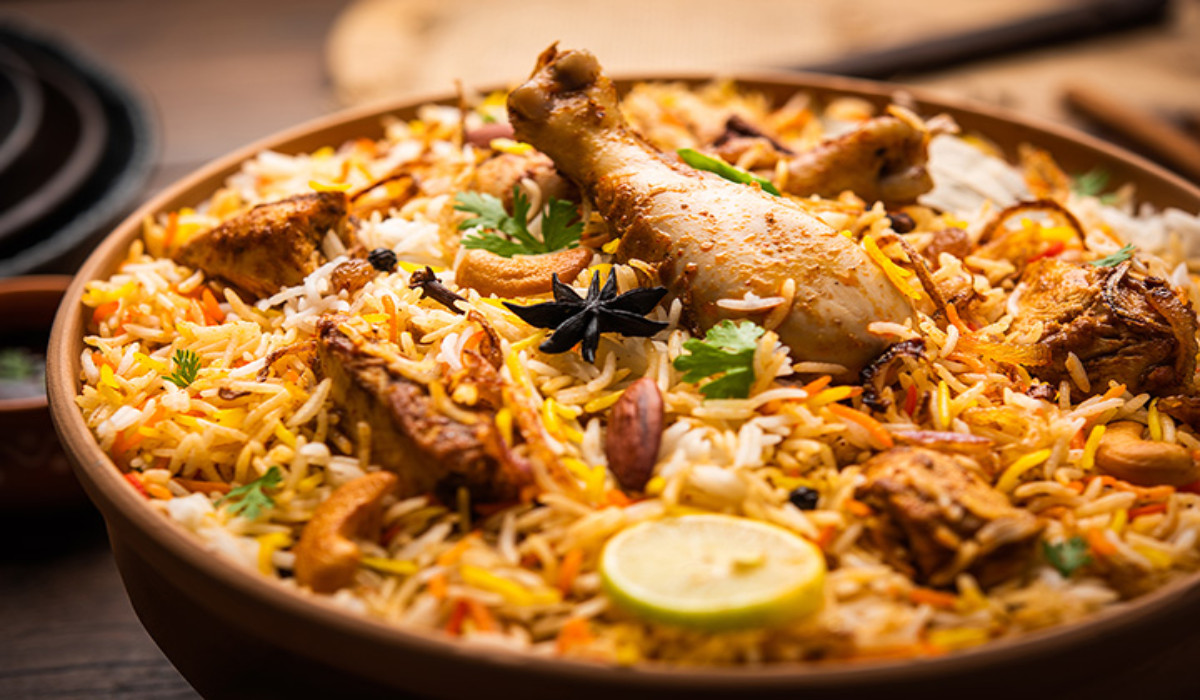
The crown jewel of Indian rice dishes and food of kings, the aromatic Biryani is made of long-grain Basmati rice and marinated meat (chicken, mutton or fish) combined with a blend of spices like saffron, cardamom and bay leaves.
Many Indian regions have their own brands of Biryani and stake their claims for the best Biryani in India.
But we think the crown for this most popular food in India belong to the Hyderabadi Biryani from the southern Indian city of Hyderabad in the state of Telangana.
Other region like Kolkata (West Bengal) and Lucknow (Utter Pradesh) are also famous for their versions of Biryani. Indians love their biryani. You should give it a try.
Recommended Biryani Outlets:
- Paradise Restaurant (Hyderabad)
- Arsalan Biryani (Kolkata)
- Idris Biryani (Lucknow)
Murgh Makhani (Butter Chicken)
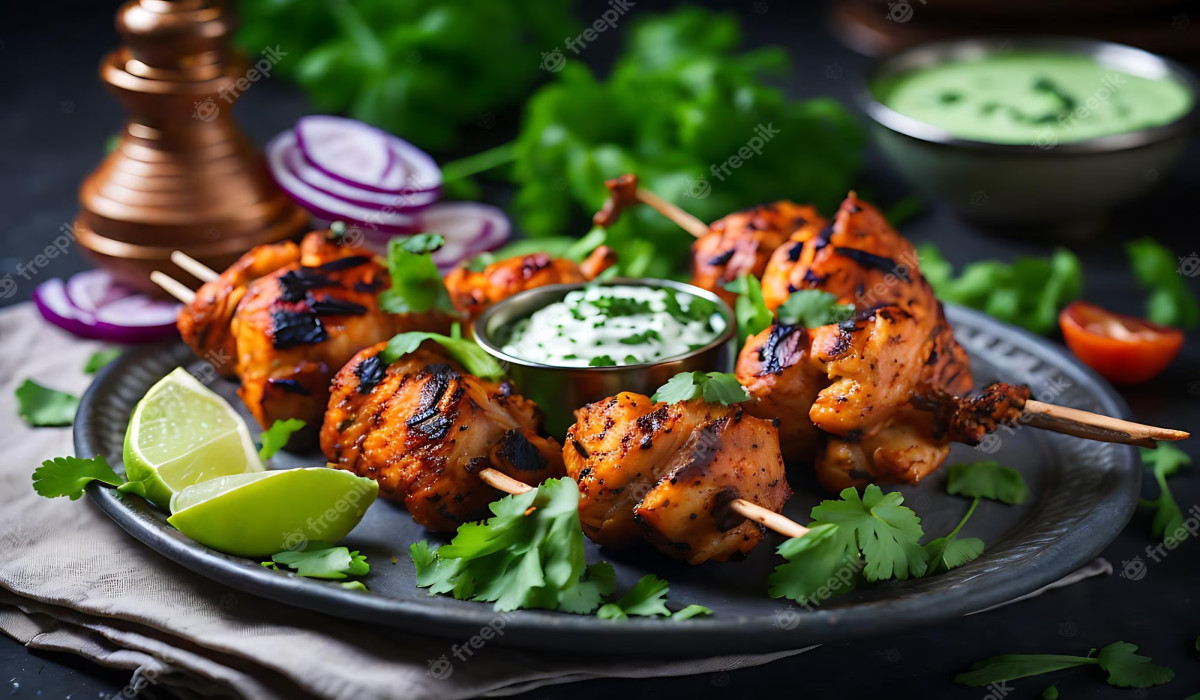
Punjab’s pride, Butter Chicken, is made of tender pieces of grilled chicken simmered on a rich, creamy tomato gravy, flavored with butter, Garam Masala and fenugreek.
Recommended Murgh Makhani Place:
-Moti Mahal in Delhi
Masala Dosa
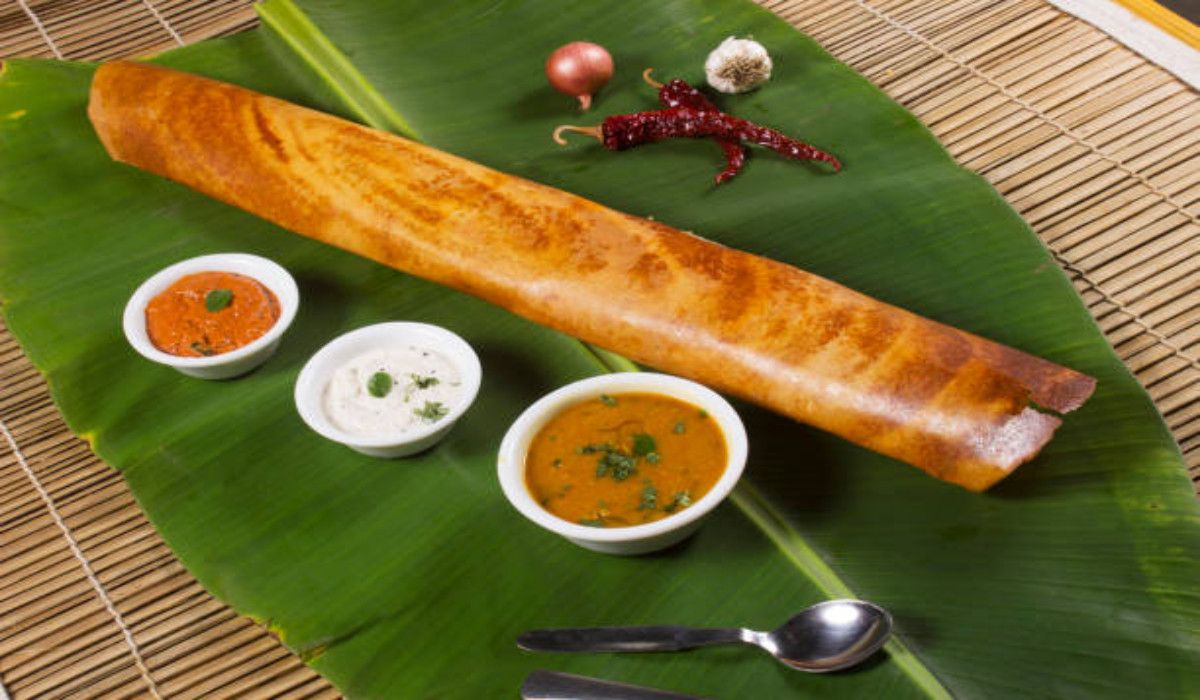
This South Indian delicacy is a crepe that is crispy on the outside and filled with a spiced potato mixture on the inside. It is usually served with coconut chutney and Sambar (a lentil and vegetable stew).
Recommended Masala Dosa Outlets in South India:
-Mavallai Tiffin Rooms and Central Tiffin Room (Bangalore)
-Hotel Saravana Bhavan (Chennai)
-Sagar Ratna (New Delhi)
Vada Pav
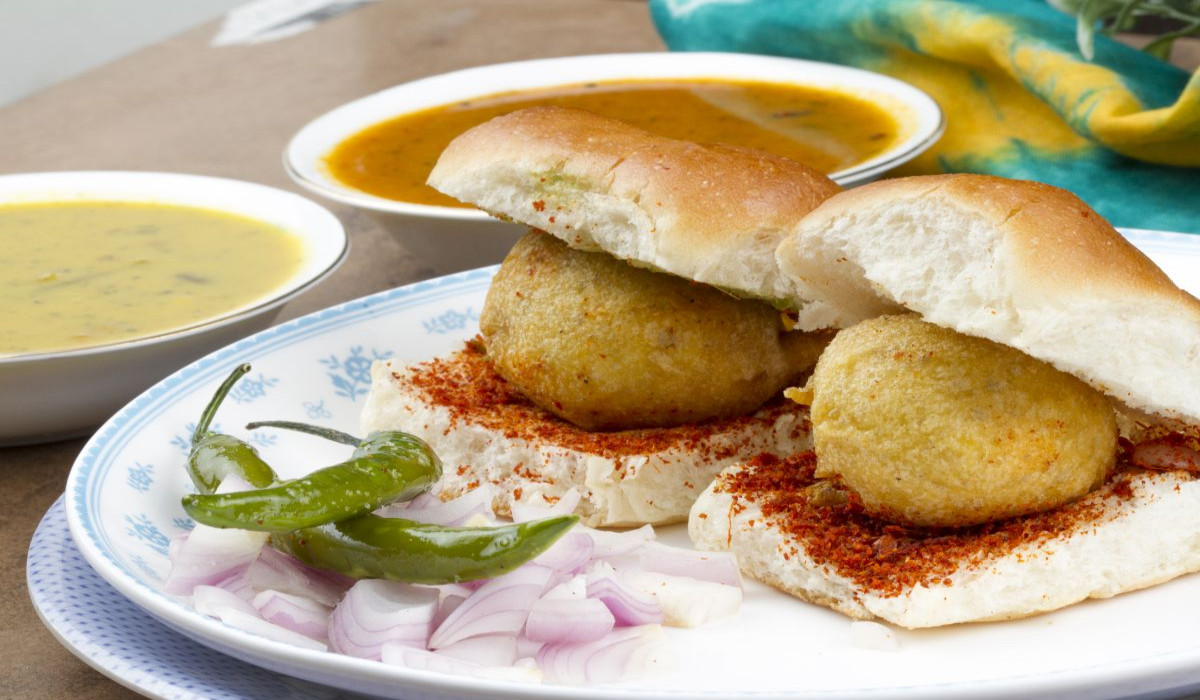
Indians love the Vada Pav. It is the Indian answer to Western burger. Mumbai’s favorite street food, the Vada Pav comprise spicy potato fritters (vada) sandwiched between a soft bun (pav) and is typically serviced with chutney and green chillies.
Recommended Vada Pav Street Stalls in Mumbai
-Ashok Vada Pav, Dadar
-Aram Vada Pav near Capitol Cinema
-Jai Maharashtra Vada Pav, Andheri West
Chicken Tikka
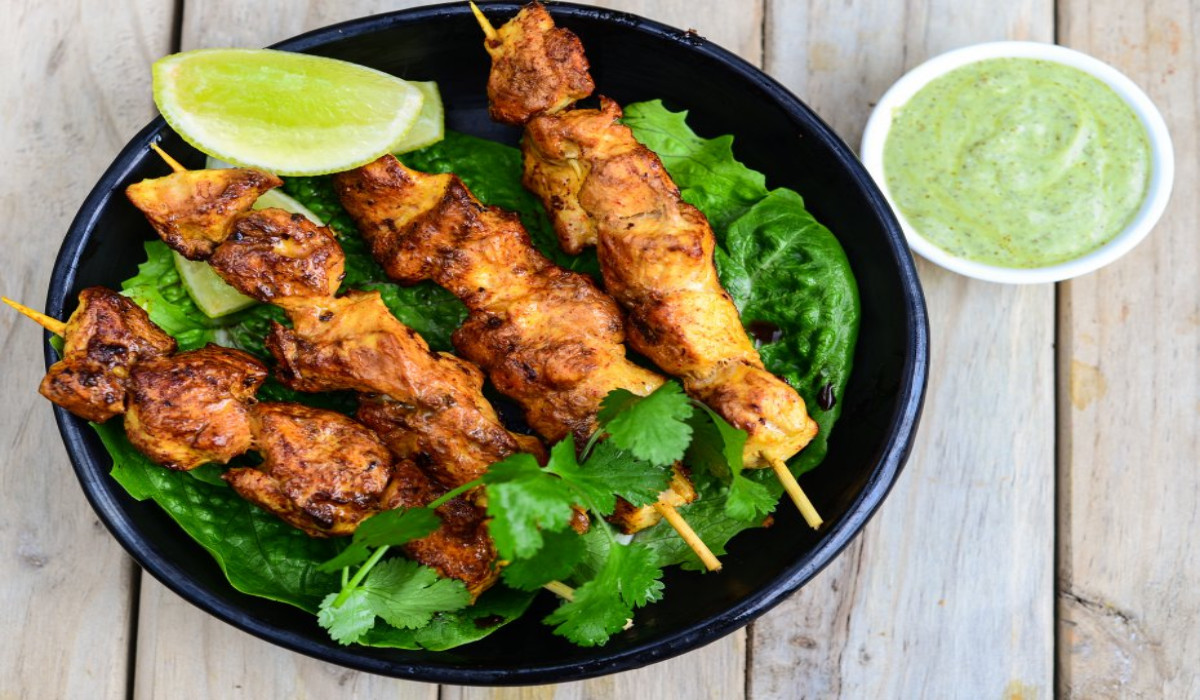
Another globally famous dish that can be traced back to Punjab region, but is enjoyed all over India is the delicious Chicken Tikka.
Marinated and skewered pieces of chicken are cooked in a tandoor (clay oven) and blended with yogurt and various spices.
Recommended Places for Chicken Tikka in India
Old Delhi: Karim’s and Moti Mahal in Daryaganj
Amritsar: Beera Chicken House
Lucknow: Tunday Kababi
Mumbai: Bademiya
Chole Bhature
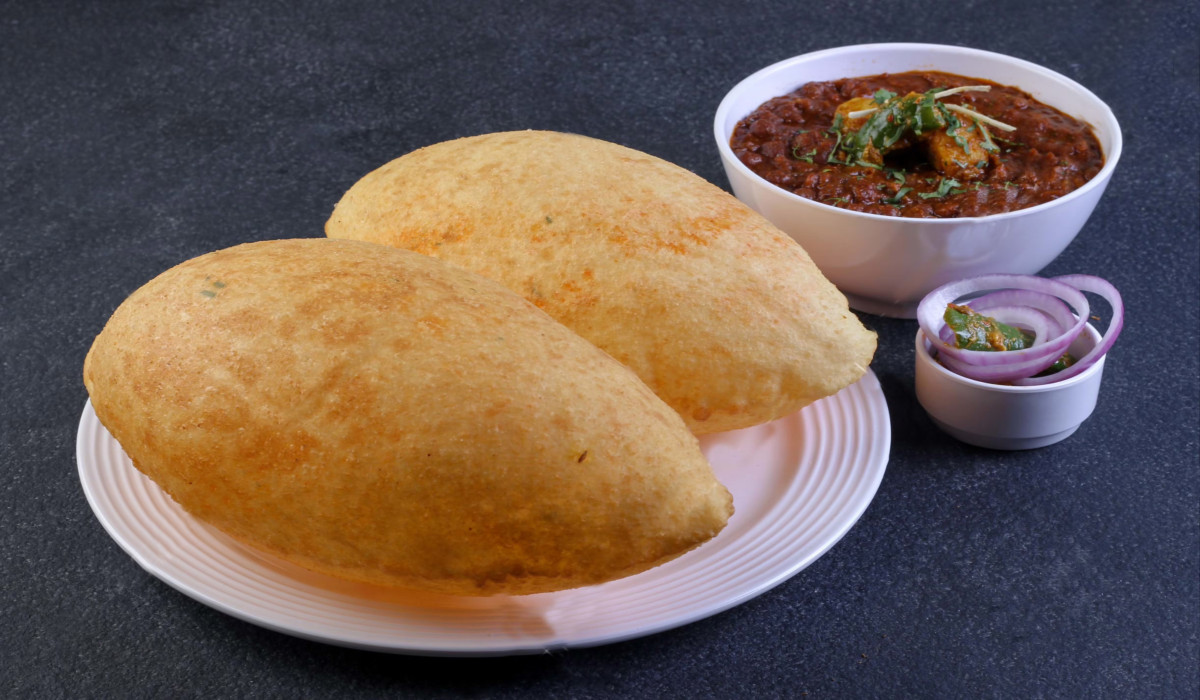
One of the most beloved street food in North India, the Chole Bhature is made of spicy chickpea curry (chole) served with a deep-fried bread called Bhature.
The nation’s capital is the place to sample best of this delicacy.
Recommended Chole Bhature Outlets in Delhi
-Sitaram Diwan Chand, Paharganj
-Baba Nagpal Corner, Lajpat Nagar
-Kwality Restaurant, Connaught Place
Idli-Sambar
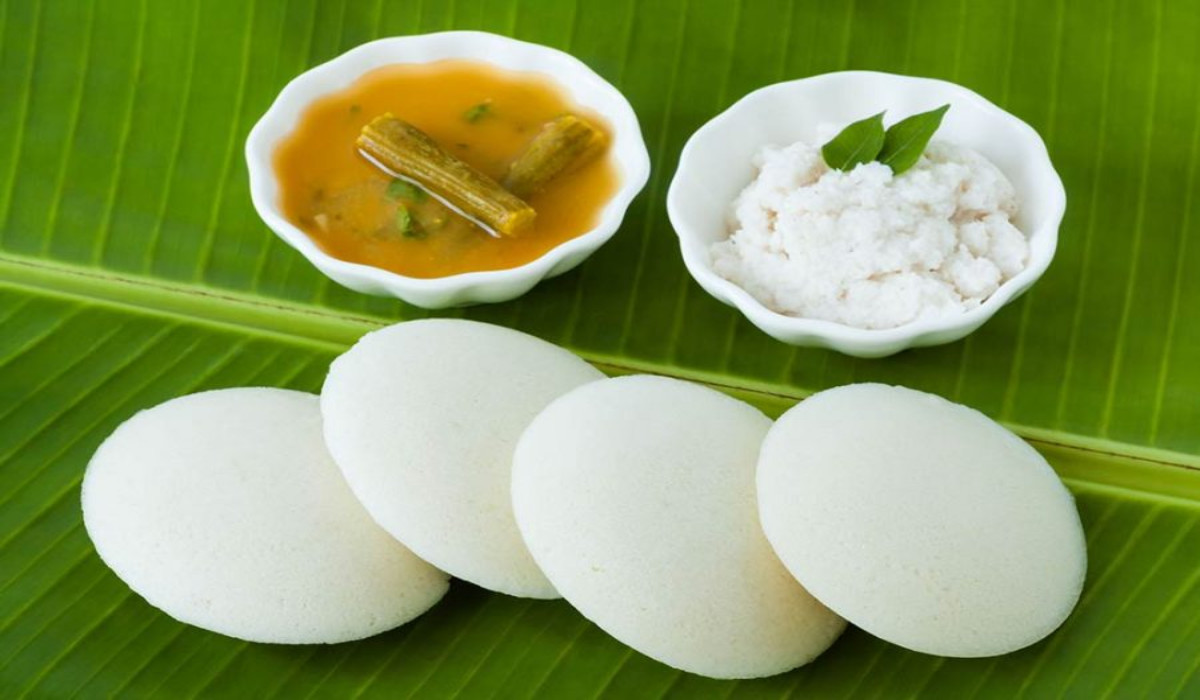
A southern Indian delicacy, the Idli-sambar (rice cakes) is a popular breakfast snack made from fermented rice and lentil batter. Served with coconut chutney, the dish is eaten with a lentil stew.
Recommended Place:
Murugan Idli Shop in Chennai.
Naan
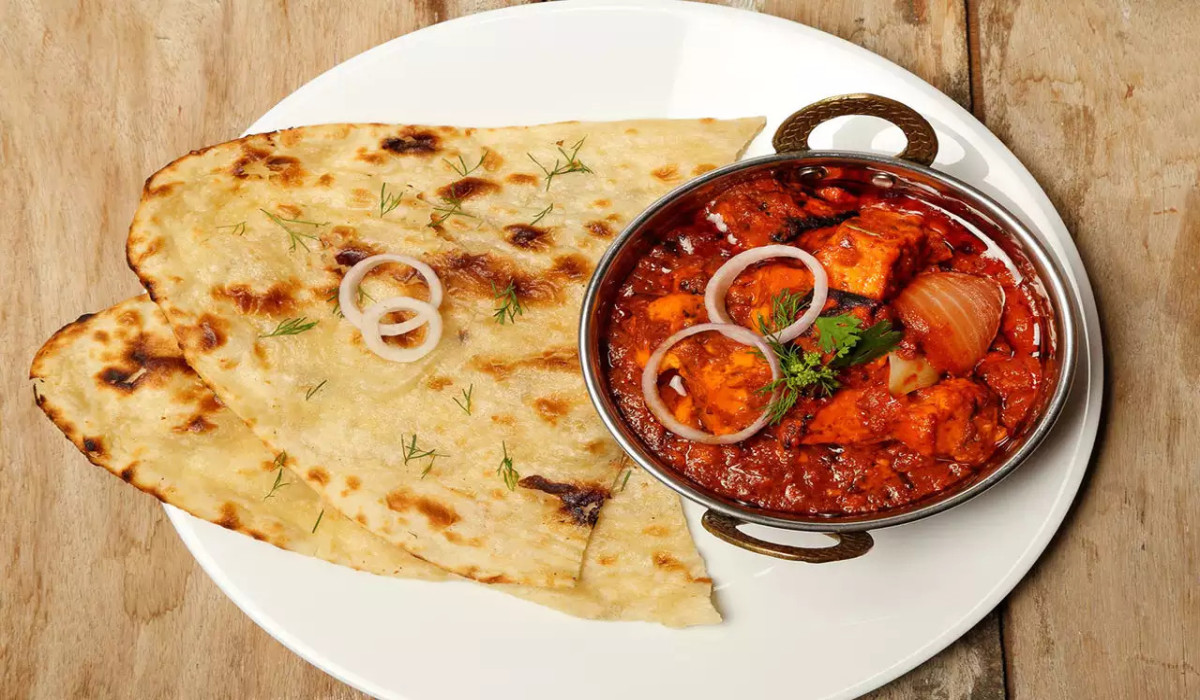
The leavened, oven-baked flatbread called Naan, (made from wheat dough that is stretched and slapped onto inner wall of a tandoor, a traditional clay oven) is enjoyed all over subcontinent and is a particular hit with tourists visiting India.
You usually get to choose between Naan or Chapati Roti (or order both) as your bread to savor delicious Indian curries and dishes at a restaurant in India.
We particularly recommend the Garlic Naan variant which is prepared from minced or crushed garlic cloves, which adds a delicious savory flavor to the bread.
Naan can be enjoyed with all gravy and non-gravy dishes like curries, kebabs and BBQ, and is readily available all over India.
Other Honorable Mentions
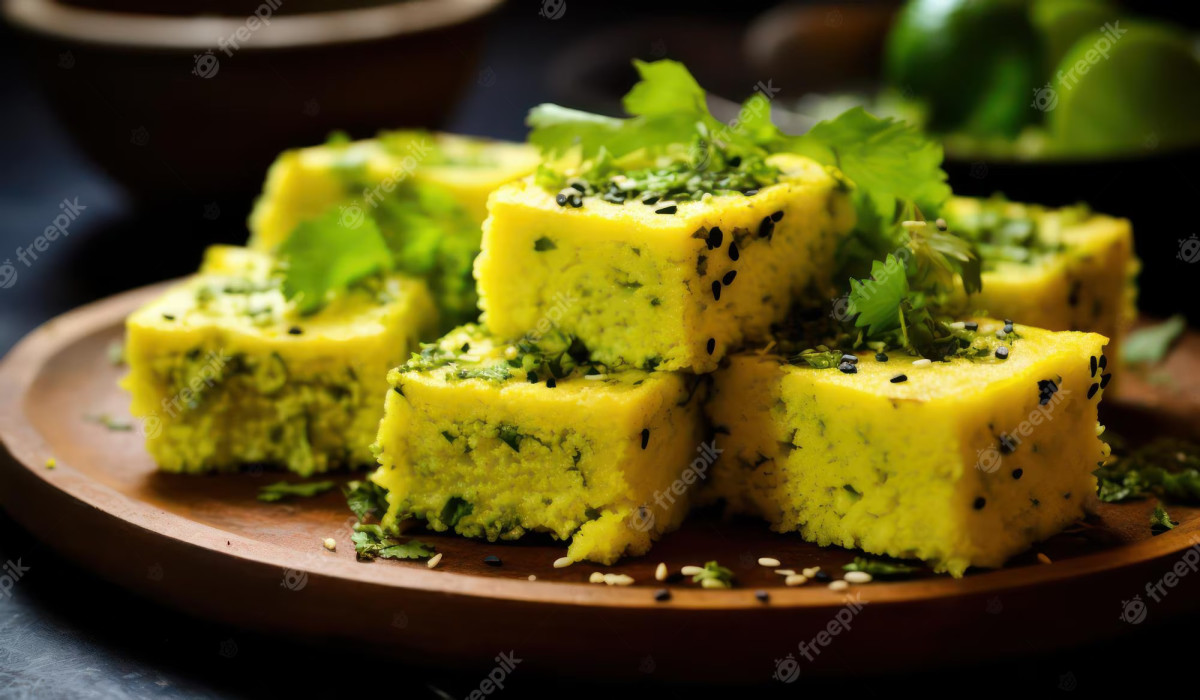
In Gujarat sample the Dhokla, a savory steamed cake made from fermented chickpea flour and served with green chutney (Recommended outlet: Das Khaman House, Ahmadabad).
Misal Pav is another gem from Maharashtra. It is a sprouted lentil curry served with fresh bread rolls called Pav (recommended places, Katakirr Misal or Bedekar Misal in Pune).
In Kashmir try the Rogan Josh (meat curry cooked in yogurt and saffron). It is a particularly sumptuous dish for those who are up for a spicy challenge.
Recommended outlet: Ahdoos in Srinagar.
Frequently Asked Questions About Eating And Drinking In India
What is the traditional way of eating in India?
It is customary to eat with your hands. That is how most Indians eat their food. You are expected to wash your hands before and after eating your food.
ALWAYS EAT USING YOUR RIGHT HAND. The use of the left hand to eat food is considered bad manners.
How can I eat in India without getting sick?
Never drink water from the tap. Always use bottled water. Eat at reputable restaurants that offers good quality and fresh food.
Do your research online before you choose a place to eat in. Read the reviews or ask a local.
For more details, check out our TOP TIPS FOR EATING IN INDIA AND AVOID GETTING SICK.
How can I prevent stomach problems in India?
The number one thing to keep in mind is to always use bottled water or filtered water from your hotel.
CARRY A WATER BOTTLE AROUND. Talk to your doctor before you travel to India. He might recommend certain probiotics that will ensure that your stomach has a sturdy defense against bacterial infections.
EAT FRESHLY COOKED FOOD. Avoid eating at dodgy restaurants or food stalls. Pick ones reviewed well online or recommended by locals.
If you are travelling in the summers, keep hydrating yourself to beat the heat and humidity.
CARRY ELECTROLYTE SACHETS OR TABLETS to replenish your hydration reserves in the body. It will go a long way toward protecting you from waterborne infections like typhoid, diarrhoea and food poisoning.
What do people in India eat?
The Indian culinary landscape is quite diverse. You will find a wide variety of food cultures and traditions in different parts of India.
Most popular Indian foods are rice (Biryani & Pulao), Chapati (flat bread), Naan (bread), Dal (lentils), curries, vegetables (potatoes, onions, cauliflowers, spinach, eggplant) and dairy products like Ghee (clarified butter), yogurt (curd) and Paneer (cottage cheese).
SPICES like coriander, cumin, turmeric, cardamom, cloves and cinnamon are regularly used across India to add flavor and texture to food.
Indians also have a sweet tooth. The favorite Indian desserts are Kheer (rice pudding), Gulab Jamun (deep-friend dumplings made from reduced milk solids), Jalebi (pretzel-like wheat flour batter), Rasgulla and Barfi.
What time do Indians eat dinner?
Dinner in India is usually served after sunset, usually between 7 pm to 9 pm. The exact time may vary across regions and individual preferences.
What time do Indians have their breakfast?
Usually, Indians have their breakfast around 7 am to 9 am. Most workplaces, educational institutions and businesses typically open around 8 or 9 am.
A traditional Indian breakfast usually comprise a cup of Chai with a paratha (fried flatbread) in North India and Dosas (fermented crepes) and Idlis (steamed rice cakes) and Poha (flattened rice) in South India.
What is dinner like in India?
How dinner is taken may vary across India and depend upon local traditions, resources and individual preferences.
For the main course, you usually have rice (pulao, biryani or steamed rice), a vegetable curry or Dal (lentil) and Chapati/Naan (bread). The bread and rice provides a rich source of carbohydrates, whereas the other items provide proteins and fats.
To add further flavor pickles, Raita (yogurt) and Papad (crispy lentil wafers) may also be taken with main course.
The main course is usually followed by a dessert (Gulab Jaman, Kheer, Jalebi) and a drink (usually chai).
How many meals are usually taken in India?
Usually, there are 3 main meals of the day with some snack-munching in between. These are breakfast (7 am-9m), lunch (12-2 pm), and dinner (7-9 pm). It is also a good idea to have some “tea time” (usually around late afternoon, 4-6 pm) after you have had your afternoon siesta or hectic work.
What is the difference between dinner and supper in India?
In India, the words supper and dinner are often used interchangeably and there is usually one meal post sunset which is taken around 7 to 9 pm, depending upon the time of year.
In summer when the days are longer, the meal is taken slighter later than in winter when night fall earlier. Indian do not have separate names for what is usually differentiated in West as dinner and supper.
What do Indians eat for breakfast?
Typically the Indian breakfast comprises a cup of hot chai with paratha (oiled flatbread), Poha (flattened rice), Dosas (fermented crepes) and Idlis (steamed rice cakes).
What is a typical Indian lunch like?
How lunch is taken in India may depend upon individual preference, culinary traditions and the nutrient requirements of the region.
Like the Indian dinner, main course for lunch usually comprises a vegetable or lentil curry served with Naan/Chapati (bread). Rice (pulao, biryani) is also a popular main course. If the region is non-vegetarian, there may also be chicken, beef, fish or mutton-based dishes.
For accompaniments with the main course, you may also get pickles, yogurt, Raita (a yogurt-based dish with chopped vegetables) or papad (lentil wafers).
For desserts, you can go for Jalebi, Gulab Jamun, Kheer or custard.
What is the most common breakfast food in India?
In Northern India, typical breakfast usually comprises Chai with Paratha (oiled flatbread), Chole Bhature (deep-friend chickpeas curry) or Aloo Poori (spice potato curry taken with flatbread).
In South India, staple breakfast consists of Idli (steamed rice cakes served with chutney), Dosa (crispy fermented crepes), Upma (semolina or rice flour dish) and Pongal (a rice and lentil dish).
In West India, people start their day with Poha (flattened rice flakes), Dhoklas (steamed savory fermented gram flour cakes served with chutney) and Thepla (Gujarati spiced flatbreads).
Luchi (deep-friend spice flatbread made from wheat) and Chholar Dal (Bengali-styled chickpeas cooked with coconut and spices) are popular breakfasts in East India.
In Central India, the typical breakfast consists of Poha or Sabudana Khichdi (tapioca pearls cooked with potatoes, peanuts and spices).
What is the tastiest breakfast in India?
We think you have to sample the respective breakfast of each Indian region to make up your mind. Paratha and Chole Bhature with Chai in North India.
Dosas and Idli in South India. Dhoklas and Gujarati Theplas in West India and finally Luchi and Choolar Dal in East India.
What is the most unhealthy Indian breakfast?
There is no such thing as an unhealthy Indian breakfast as long as it is made hygienically.
But if you have a dodgy stomach, you are probably better off avoiding oily and extra-spicy breakfast items like Chole Bhature (deep-fried chickpeas), Aloo Paratha with Butter or Ghee or spicy Vada Pav.
How Healthy is the Indian Food?
As long as you make informed choices, Indian food can be a sumptuous mouth-watering and healthy affair.
Typically INDIAN FOOD is made from fresh and healthy ingredients like vegetables, rice, herbs, lentils, whole grains and spices.
Do however make sure that the food served to you is freshly prepared using fresh ingredients and hygienic means.
PREFER PLANT-BASED OPTIONS like lentils, chickpeas and beans.
 Skip to main content
Skip to footer
Skip to main content
Skip to footer
